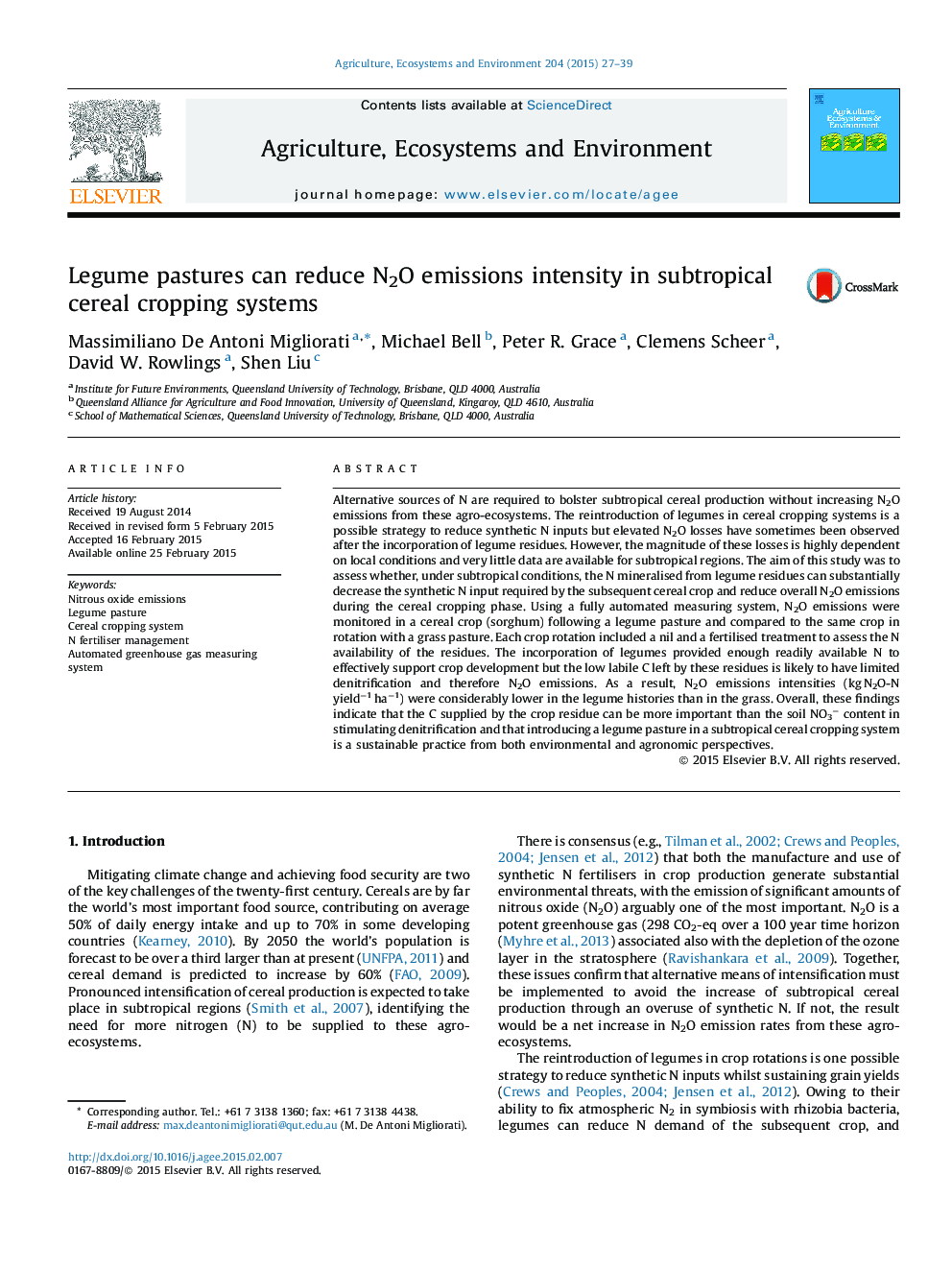| کد مقاله | کد نشریه | سال انتشار | مقاله انگلیسی | نسخه تمام متن |
|---|---|---|---|---|
| 2413791 | 1552048 | 2015 | 13 صفحه PDF | دانلود رایگان |

• N2O emissions were monitored in sorghum following a legume and a grass pasture.
• Legumes provided readily available N to effectively support sorghum development.
• The small amount of labile C left by legume residues limited denitrification.
• N2O emissions in sorghum after legumes were 50% lower than after the grass pasture.
• C supplied by crop residues can play a major role in stimulating denitrification.
Alternative sources of N are required to bolster subtropical cereal production without increasing N2O emissions from these agro-ecosystems. The reintroduction of legumes in cereal cropping systems is a possible strategy to reduce synthetic N inputs but elevated N2O losses have sometimes been observed after the incorporation of legume residues. However, the magnitude of these losses is highly dependent on local conditions and very little data are available for subtropical regions. The aim of this study was to assess whether, under subtropical conditions, the N mineralised from legume residues can substantially decrease the synthetic N input required by the subsequent cereal crop and reduce overall N2O emissions during the cereal cropping phase. Using a fully automated measuring system, N2O emissions were monitored in a cereal crop (sorghum) following a legume pasture and compared to the same crop in rotation with a grass pasture. Each crop rotation included a nil and a fertilised treatment to assess the N availability of the residues. The incorporation of legumes provided enough readily available N to effectively support crop development but the low labile C left by these residues is likely to have limited denitrification and therefore N2O emissions. As a result, N2O emissions intensities (kg N2O-N yield−1 ha−1) were considerably lower in the legume histories than in the grass. Overall, these findings indicate that the C supplied by the crop residue can be more important than the soil NO3− content in stimulating denitrification and that introducing a legume pasture in a subtropical cereal cropping system is a sustainable practice from both environmental and agronomic perspectives.
Journal: Agriculture, Ecosystems & Environment - Volume 204, 1 June 2015, Pages 27–39